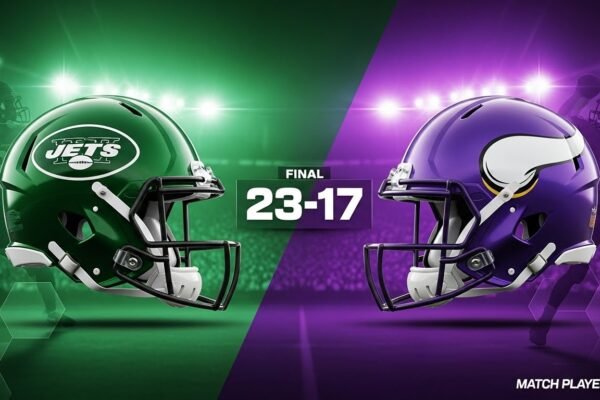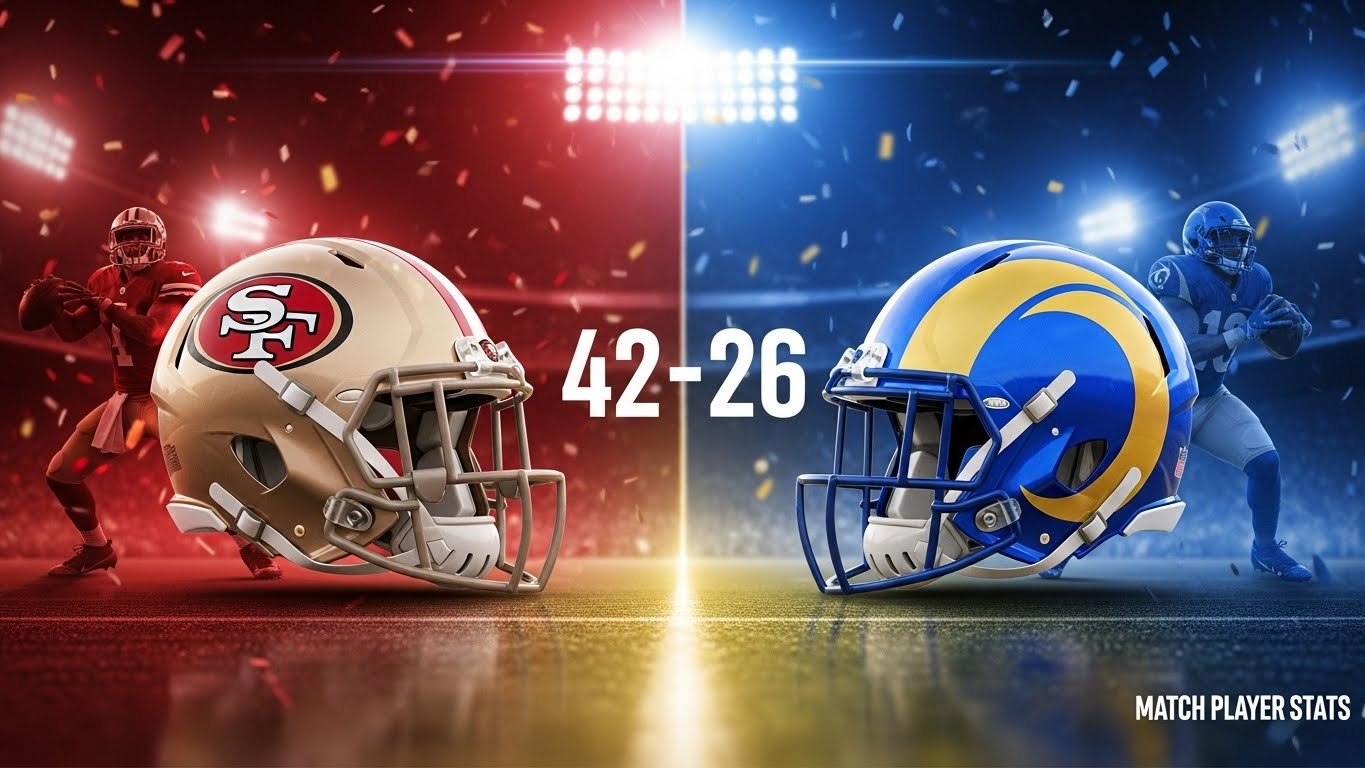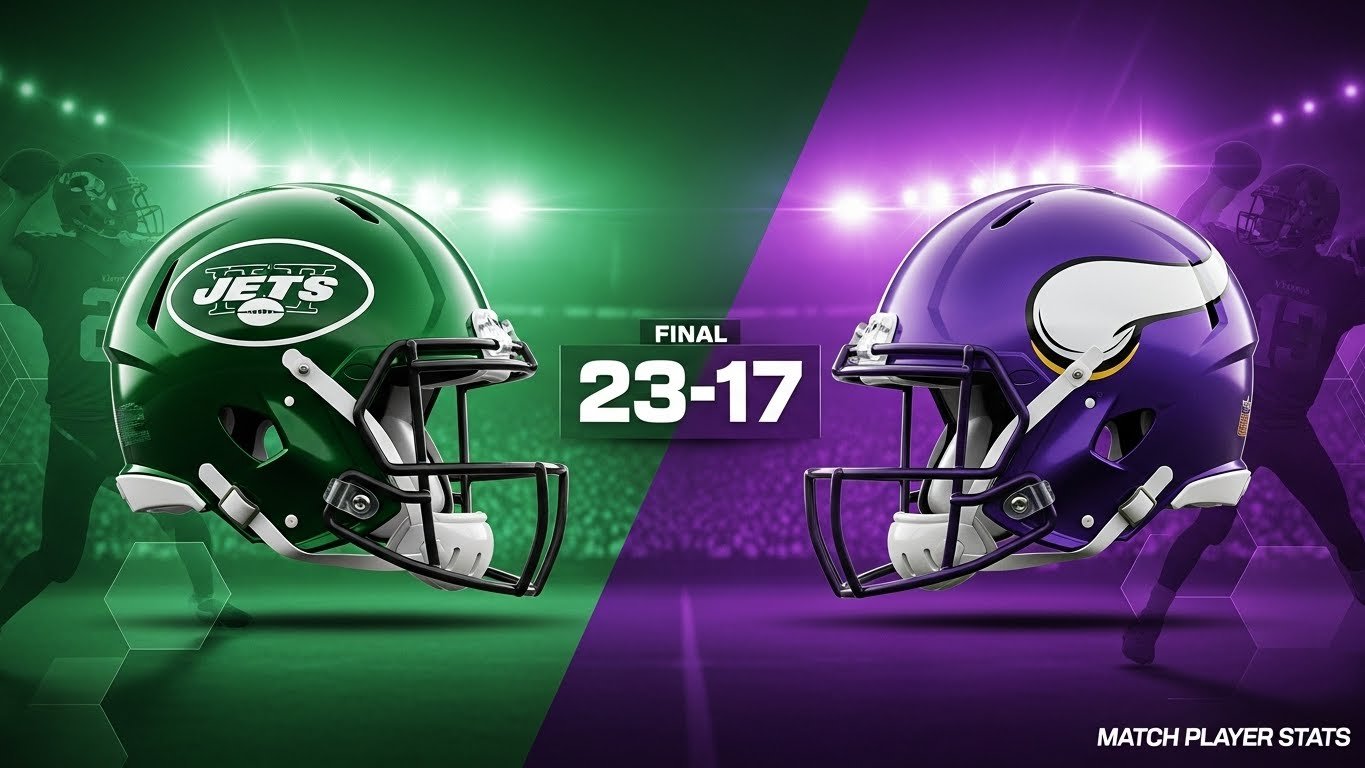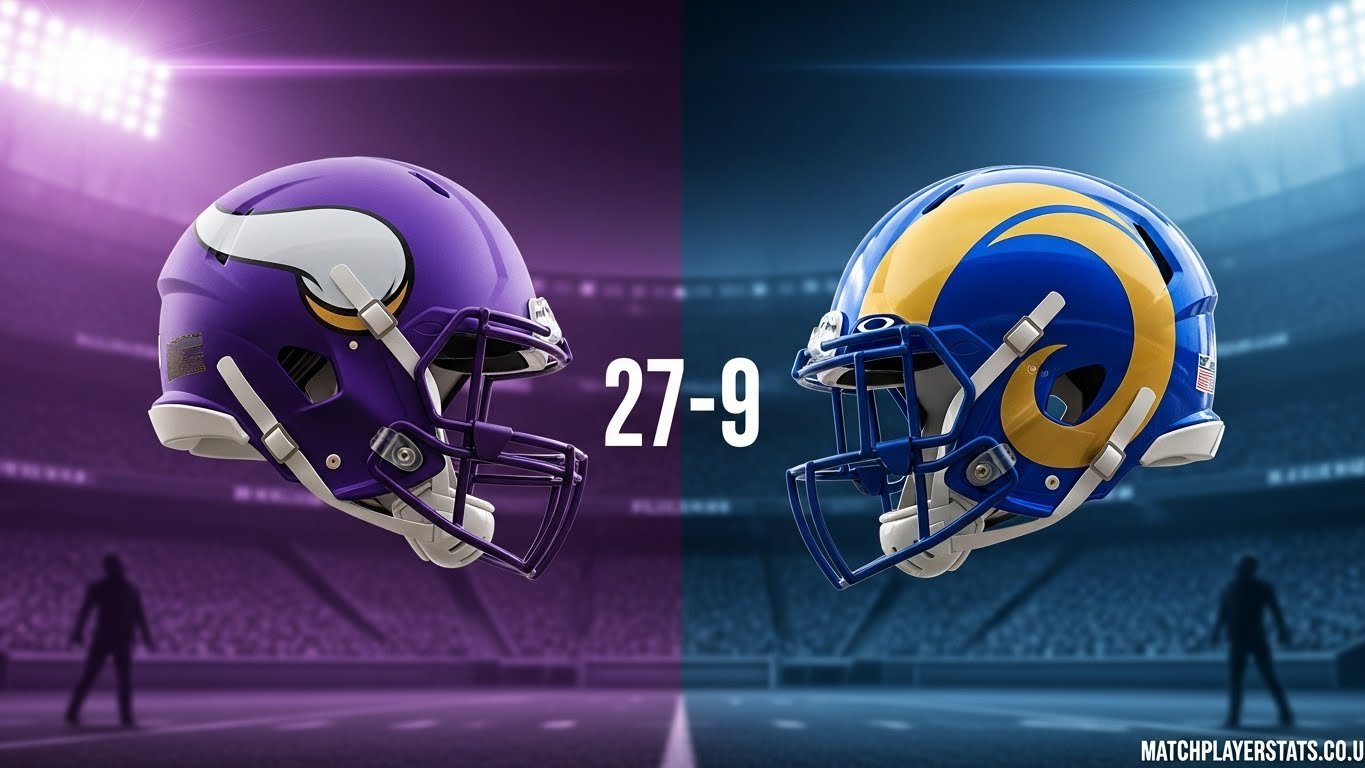
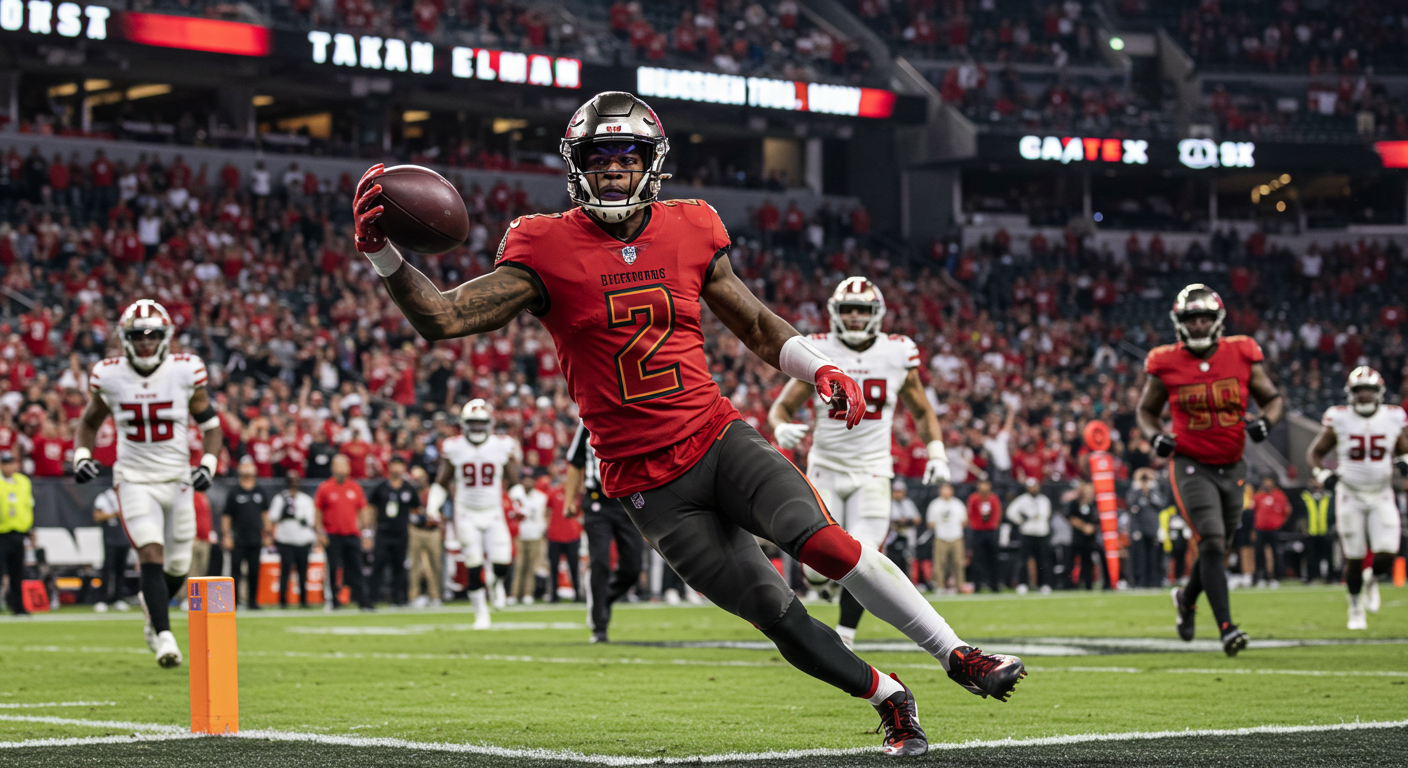
Tampa Bay Buccaneers vs Atlanta Falcons Match Player Stats (Sep 7, 2025)
Game Snapshot
Tampa Bay had no business winning this game. The Buccaneers got outgained by 98 yards, held the ball for just 24:48 compared to Atlanta’s 35:12, and nearly threw it away when Chase McLaughlin shanked an extra point. But they walked out of Mercedes-Benz Stadium with a victory because rookie Emeka Egbuka delivered two clutch touchdowns and Younghoe Koo, one of the NFL’s most reliable kickers, missed a 44-yard field goal as time expired.
Five weeks later, that missed kick still haunts Atlanta’s season. The Falcons dominated possession and yardage but couldn’t match Tampa Bay’s efficiency when scoring opportunities arrived. The Buccaneers converted 50% of third downs while Atlanta managed just 40%. More damaging, Tampa Bay scored touchdowns on all three red zone trips while Atlanta needed an exhausting 18-play, 91-yard drive just to take the lead with 2:17 left.
Coach Raheem Morris didn’t hide from the obvious afterward. “He missed it. I’m not going to sit here and pretend I can tell you about the technique and what happened with that miss. But we got to make those kicks. Those are very makeable kicks. We’ve got to lock in and get that done.”
Table of Contents
By the Numbers: Efficiency Beats Volume Every Time
| Quarter | Tampa Bay | Atlanta |
|---|---|---|
| 1st | 0 | 7 |
| 2nd | 10 | 3 |
| 3rd | 7 | 3 |
| 4th | 6 | 7 |
| Final | 23 | 20 |
Bijan Robinson caught a 50-yard touchdown on Atlanta’s opening drive, and the Falcons controlled most game metrics from there. They held advantages in first downs (23-16), total yards (358-260), and time of possession by more than 10 minutes. Neither team turned the ball over.
But yardage doesn’t equal points. Third-down conversions win close games. Tampa Bay’s 50% conversion rate on third down crushed Atlanta’s 40%. The real killer? Red zone efficiency. Both teams scored on every red zone trip, but Atlanta only got two chances while Tampa Bay got three.
| Critical Stats | Tampa Bay | Atlanta |
|---|---|---|
| Total Yards | 260 | 358 |
| First Downs | 16 | 23 |
| Time of Possession | 24:48 | 35:12 |
| Third Down Efficiency | 7/14 (50%) | 6/15 (40%) |
| Fourth Down Success | 1/1 (100%) | 3/4 (75%) |
| Red Zone Touchdowns | 3/3 (100%) | 2/2 (100%) |
| Turnovers | 0 | 0 |
| Penalties | 5-60 | 8-55 |
According to Pro Football Reference’s detailed play-by-play data, Tampa Bay generated positive Expected Points Added in crucial moments while Atlanta’s long drives required multiple fourth-down conversions just to stay alive.
The 71,610 fans at Mercedes-Benz Stadium watched efficiency beat volume in a division game that’s shaped NFC South standings through October. This Week 1 performance metrics established a pattern: Tampa Bay wins tight games through situational football while Atlanta dominates stretches but fails to close.
Baker Mayfield Outplays Michael Penix Jr. Despite Throwing for 131 Fewer Yards
Mayfield’s Three Touchdowns Trump Everything
| Baker Mayfield | Comp/Att | Yards | TDs | INTs | Rating | PFF Grade | Rush Yds |
|---|---|---|---|---|---|---|---|
| Final Stats | 17/32 | 167 | 3 | 0 | 99.3 | 82.4 | 5-39 |
Mayfield’s 167 passing yards won’t make highlight reels, but his three touchdown passes and zero interceptions earned the highest offensive grade in the game from Pro Football Focus at 82.4. His approach was simple: attack vertically and trust your receivers to win. With an average depth of target at 10.5 yards, Mayfield threw downfield while letting his targets do the work. Only 28.6% of his yardage came after the catch.
His legs bought him time when protection broke down, including a crucial 20-yard scramble in the second quarter that kept a scoring drive alive. But the game-winning throw showed veteran savvy at its best. Trailing 20-17 with under a minute left, Mayfield used a pump fake to manipulate Atlanta safety Jessie Bates III. The fake froze Bates just enough to create single coverage on Egbuka for the 25-yard score.
“You can’t get much of a better ball than that,” Egbuka said. “Obviously, it feels great to be able to help my team win.”
Mayfield showed class after beating Atlanta’s rookie quarterback. “I told him after the game he’s going to be a problem in this league for a long time.”
Todd Bowles praised both his quarterback and rookie receiver afterward. “He’s everything we thought since he’s been here. He played with so much poise and Baker played with so much poise.”
Penix’s 298 Yards Can’t Overcome Short Passing Attack
| Michael Penix Jr. | Comp/Att | Yards | TDs | INTs | Rating | PFF Grade | Rush Yds |
|---|---|---|---|---|---|---|---|
| Final Stats | 27/42 | 298 | 1 | 0 | 93.2 | 75.9 | 6-21-1 TD |
Penix completed 64% of his passes for 298 yards in his first start as Atlanta’s franchise quarterback. Add his rushing touchdown and 21 yards on the ground, and you’ve got 319 total yards with two scores. Zero turnovers kept Atlanta competitive throughout.
But his 7.0 average depth of target tells the real story. A full 62.1% of his yardage came after the catch, showing an offensive scheme built on getting the ball out quickly and letting playmakers work in space. Pro Football Focus graded the performance at 75.9, solid for a debut but not spectacular for a quarterback who attempted 42 passes.
His finest moment came on Atlanta’s final scoring drive. Penix led an 18-play march covering 91 yards over 8:46, converting two fourth downs including his own 4-yard rushing touchdown that gave Atlanta a 20-17 lead with 2:17 left. But that marathon drive may have been a strategic disaster, leaving too much time for Mayfield while exhausting Atlanta’s defense.
“We’ve got to be better in all aspects,” Penix admitted. “Not just rushing but me as well in different situations where I could have given my guys a better chance at the ball.”
Egbuka’s Dream Debut: Two Touchdowns in the Building Where He Won a Title
| Emeka Egbuka | Targets | Catches | Yards | TDs | Long | YAC |
|---|---|---|---|---|---|---|
| Final Stats | 6 | 4 | 67 | 2 | 30 | 15 |
Eight months after Ohio State’s national championship victory in this building, Egbuka made his NFL debut on the same field. His two touchdown catches didn’t just shift momentum twice. They announced a star’s arrival.
30-Yard Score (Q2, 6:53): Tampa Bay’s defense stuffed Atlanta on fourth-and-1 at midfield early in the second quarter. Mayfield found Egbuka on the ensuing possession with a play-action strike for 30 yards and six points. McLaughlin’s extra point gave Tampa Bay their first lead at 10-7.
25-Yard Game-Winner (Q4, 0:59): This play will replay in Atlanta fans’ nightmares for years. Tampa Bay ran a condensed bunch formation with Mike Evans drawing attention from the slot. Mayfield’s pump fake froze Bates, creating single coverage on the rookie. Egbuka secured the catch for 25 yards and the touchdown with 59 seconds remaining. McLaughlin missed the extra point, keeping it 23-20 instead of 24-20.
Mayfield praised his rookie’s quick adjustment to NFL speed. “Just the way he carries himself. As you guys saw today, he’s the real deal.” The connection between veteran quarterback and first-year receiver developed “extremely quickly” according to Mayfield, and it showed on both scoring plays.
Tampa’s Run Defense Destroys Atlanta’s Identity
Tampa Bay’s defensive front demolished Atlanta’s ground game, holding the Falcons to 69 yards on 28 carries. That’s 2.5 yards per attempt, and it forced Atlanta into a one-dimensional attack that became predictable.
| Rushing Leaders | Carries | Yards | Average | TDs | Long |
|---|---|---|---|---|---|
| Bijan Robinson | 12 | 24 | 2.0 | 0 | 6 |
| Tyler Allgeier | 10 | 24 | 2.4 | 0 | 5 |
| Michael Penix Jr. | 6 | 21 | 3.5 | 1 | 12 |
Robinson’s 2.0 yards per carry was an embarrassing performance for a player with his talent level. Twelve carries, 24 yards, and zero room to operate against Tampa’s front seven. Tyler Allgeier fared no better at 2.4 yards per attempt. The complete absence of a ground game eliminated play-action effectiveness and compressed the field for Atlanta’s receivers.
Atlanta’s coaching staff compensated by featuring Robinson as their primary pass catcher, and that actually worked.
| Top Receivers | Targets | Catches | Yards | TDs | Long | YAC |
|---|---|---|---|---|---|---|
| Bijan Robinson | 7 | 6 | 100 | 1 | 50 | 106 |
| Kyle Pitts | 8 | 7 | 59 | 0 | 14 | 36 |
| Drake London | 15 | 8 | 55 | 0 | 12 | 14 |
Robinson led all receivers with 100 yards on six catches. His touchdown came on Atlanta’s opening drive (Q1, 13:14) when Penix hit him with a short pass on second-and-5 from their own 46. Robinson turned the catch into a 50-yard score, giving Atlanta a 7-0 lead after Koo’s extra point just 1:46 into the game.
But using your best running back as your leading receiver creates problems. Tampa Bay’s linebackers sat on short routes without worrying about getting gashed on the ground. The offense became predictable despite generating yardage.
Drake London’s inefficiency hurt despite heavy volume. He caught just 8 of 15 targets for 55 yards, averaging 6.9 yards per reception. London also left the game with a shoulder injury. Kyle Pitts provided steadier production with 7 catches on 8 targets for 59 yards and a 75.4 PFF grade.
Tampa’s Balanced Receiving Attack
| Tampa Receivers | Targets | Catches | Yards | TDs | Long | PFF Grade |
|---|---|---|---|---|---|---|
| Emeka Egbuka | 6 | 4 | 67 | 2 | 30 | N/A |
| Mike Evans | 8 | 5 | 51 | 0 | 14 | 75.1 |
| Sterling Shepard | 6 | 3 | 39 | 0 | 19 | N/A |
| Bucky Irving | 4 | 4 | 8 | 1 | 9 | N/A |
Mike Evans caught 5 of 8 targets for 51 yards, earning a 75.1 grade from PFF. His veteran presence and ability to draw coverage opened opportunities for Egbuka’s big plays. Sterling Shepard added 39 yards on three catches.
Running back Bucky Irving caught a 9-yard touchdown in the third quarter (Q3, 7:26) that gave Tampa Bay a 17-10 lead after McLaughlin’s extra point. Irving also carried 14 times for 37 yards, enough to prevent Atlanta’s defense from completely abandoning run support.
Defense: Tampa Holds When It Matters Most
Tampa Bay’s defense allowed 358 yards but made stops in critical situations. They generated 20 total pressures on Penix (1 sack, 2 hits, 14 hurries) according to PFF’s charting, forcing him into quick releases and short throws.
| Tampa Defense | Tackles | Sacks | TFL | PD | Total Pressures |
|---|---|---|---|---|---|
| Tykee Smith | 11 | 0.0 | 0 | 1 | N/A |
| Zyon McCollum | 10 | 0.0 | 1 | 0 | N/A |
| SirVocea Dennis | 10 | 0.0 | 2 | 1 | N/A |
| Lavonte David | 9 | 0.0 | 1 | 0 | N/A |
| Haason Reddick | 3 | 1.0 | 1 | 0 | 7 |
Haason Reddick recorded Tampa Bay’s only sack while generating seven total pressures. Holding Atlanta to 69 rushing yards on 28 carries was the defense’s real achievement, neutralizing a key part of their offensive identity.
Atlanta’s defense performed well for three quarters before fading late when exhaustion set in.
| Atlanta Defense | Tackles | Sacks | TFL | PD | Total Pressures | PFF Grade |
|---|---|---|---|---|---|---|
| Jessie Bates III | 7 | 0.0 | 0 | 0 | N/A | 79.5 |
| A.J. Terrell Jr. | 6 | 0.0 | 0 | 2 | N/A | N/A |
| Xavier Watts | 6 | 0.0 | 0 | 2 | N/A | 77.5 |
| Divine Deablo | 6 | 0.5 | 1 | 1 | 3 | 78.5 |
| Billy Bowman Jr. | 6 | 0.5 | 0 | 0 | 1 | N/A |
Atlanta forced consecutive three-and-outs to start the game and limited Tampa Bay to 192 total yards through three quarters. They generated 19 total pressures on Mayfield (1 sack, 1 hit, 15 hurries). Billy Bowman Jr. recorded Atlanta’s only sack on a blitz.
Divine Deablo earned a 78.5 PFF grade in his debut with six tackles, half a sack, and a pass breakup. Arnold Ebiketie led all defenders with an 85.2 PFF grade despite limited snaps.
The defense’s collapse on Tampa Bay’s final drive was inexcusable. With the game on the line, Atlanta leading 20-17, and needing one stop, the pass rush vanished. Mayfield had a clean pocket to deliver the game-winning touchdown. That defensive failure exposed Atlanta’s inability to execute under pressure, a problem that’s defined their season through the first month.
Special Teams: Two Missed Kicks Nearly Change Everything
| Kicker | FG Made/Att | Pct | Long | XP Made/Att | Total Points |
|---|---|---|---|---|---|
| Chase McLaughlin (TB) | 1/2 | 50% | 48 | 2/3 | 5 |
| Younghoe Koo (ATL) | 2/3 | 67% | 41 | 2/2 | 8 |
McLaughlin made a 48-yard field goal in the second quarter (Q2, 10:21) for Tampa Bay’s first points. His missed extra point after Egbuka’s go-ahead touchdown should have been disastrous. Instead of needing a touchdown to tie, Atlanta only needed a field goal. That miss nearly cost Tampa Bay the game.
Koo converted field goals from 41 yards (Q2, 0:56) and 36 yards (Q3, 0:23) plus both extra points. His reliability made the final miss shocking. The 44-yard attempt to tie the game sailed wide right, not particularly close according to observers at the stadium.
Call it what it was: Koo choked under the brightest lights. A kicker of his caliber makes that kick nine times out of ten. On this night, with 71,610 fans watching and the season opener on the line, he missed badly. No excuses, no explanations that matter. Atlanta’s season turned on one kick, and their most reliable player couldn’t deliver.
The Play That Changed Everything
Kameron Johnson’s 54-yard punt return in the third quarter was the game’s biggest special teams moment. After Atlanta’s offense went three-and-out, Bradley Pinion’s 59-yard punt should have flipped field position. Instead, Johnson fielded it and weaved through coverage all the way to Atlanta’s 32-yard line.
That return set up Bucky Irving’s touchdown two plays later, giving Tampa Bay a 17-10 lead. Field position and momentum both swung on one play. Sean Tucker’s 35-yard kick return after Penix’s go-ahead touchdown also mattered, setting up the game-winning drive from Tampa Bay’s 37 instead of the 25. Those 12 yards gave Mayfield better field position with limited time.
The 18-Play Drive: Atlanta’s Impressive Mistake
Atlanta’s 18-play, 91-yard touchdown drive remains both the game’s most impressive offensive achievement and possibly its biggest strategic blunder. The march consumed 8:46 of clock, requiring two fourth-down conversions while overcoming multiple penalties and negative plays.
Starting from their own 9-yard line with 11:09 left and trailing 17-13, the Falcons methodically moved downfield. On fourth-and-2 from Tampa Bay’s 3-yard line, Penix scrambled left for 2 yards. Officials initially ruled him short, but Atlanta successfully challenged and got a first down at the 1.
After Robinson lost 3 yards on first down and two incompletions followed, Penix scored on a 4-yard run on fourth-and-goal. Koo’s extra point gave Atlanta a 20-17 lead with 2:17 remaining.
Two roughing-the-passer penalties helped extend the drive. Vita Vea’s flag on third-and-7 from Atlanta’s 22 moved the ball to the 37. Later, Greg Gaines drew a roughing call on second-and-10 from Tampa Bay’s 48, giving Atlanta 15 yards and fresh downs at the 33. Those penalties gifted Atlanta 30 yards and two automatic first downs.
Was this drive smart football or a strategic mistake? The answer seems obvious five weeks later. Taking 8:46 to score looks impressive, but it handed Mayfield 2:17 and a blueprint for success. Worse, it exhausted Atlanta’s defense, leaving them unable to generate pressure when it mattered most.
“It felt like an eternity,” Mayfield said about waiting on the sideline during that drive.
That eternity gave him and offensive coordinator Josh Grizzard time to script their response. A quicker scoring drive taking 4-5 minutes would have left Tampa Bay with significantly less time and Atlanta’s defense with more energy. Sometimes scoring fast beats grinding clock.
Tampa’s 78-Second Answer
Tampa Bay started from their 37 after Tucker’s 35-yard kick return. Mayfield opened with a 12-yard completion to Mike Evans. On the next play, Ruke Orhorhoro drew a roughing-the-passer penalty, gifting Tampa Bay 15 yards to Atlanta’s 36.
From the 25, Mayfield executed the play that will define this game. Using the condensed bunch formation with Evans drawing attention, Mayfield pump-faked to freeze Bates. The fake created single coverage on Egbuka, who caught the 25-yard touchdown with 59 seconds remaining.
Atlanta still had one chance after McLaughlin’s missed extra point. Penix moved the Falcons from their 14 to Tampa Bay’s 26 in nine plays, but Koo’s 44-yard attempt missed wide right as time expired. The CBS Sports game tracker shows Koo’s kick wasn’t even close, sailing right from the moment it left his foot.
Injuries That Shaped the Game
Tampa Bay:
- CB Benjamin Morrison (hamstring) inactive
- LT Tristan Wirfs (knee) sidelined, forcing offensive line shuffle
Atlanta:
- WR Darnell Mooney (shoulder) held out after game-time decision
- WR Drake London left game with shoulder injury
- WR Jamal Agnew questionable with groin (Q2) but returned
Mooney’s absence limited Atlanta’s receiving depth. With London banged up and Robinson serving as the primary pass-catching option, the Falcons lacked personnel flexibility they’d hoped for in their season opener.
Tampa Bay’s offensive line shuffle deserves recognition. With Wirfs out, the Buccaneers moved rookie center Graham Barton back to his college position at left tackle and slid Ben Bredeson from guard to center. This makeshift unit allowed just one sack (Bowman’s blitz) all game while giving up 19 total pressures. Barton handled Atlanta’s edge rushers, including Leonard Floyd and first-round picks Jalon Walker and James Pearce Jr., with impressive footwork.
On Atlanta’s side, left guard Matthew Bergeron earned a 77.7 PFF grade, second-highest offensive mark in the game. The line allowed 20 total pressures while keeping Penix relatively clean throughout.
What Five Weeks Have Shown
Tampa Bay’s narrow Week 1 victory provided an early tiebreaker in the NFC South that’s paying dividends through October. The opener validated the Buccaneers’ belief in Mayfield’s leadership while immediately finding a star in Egbuka, whose production hasn’t slowed since his debut.
That rookie’s emergence was perfectly timed. Just seven months earlier in the 2024 season, Tampa Bay had watched both Mike Evans and Chris Godwin suffer devastating injuries in an October loss to Baltimore, where Lamar Jackson threw five touchdowns in a 41-31 Ravens victory. The memory of that 2024 collapse, when Tampa’s offense lost its identity overnight, influenced their draft strategy. Selecting Egbuka in the first round suddenly looks like brilliant roster management after his two-touchdown debut against Atlanta.
The offensive line’s success without Wirfs proved Tampa Bay has quality depth at the most critical position group. That depth got tested repeatedly last season, including when the Buccaneers took defending champion Kansas City to overtime in November 2024 without Evans and Godwin. Mayfield engineered a game-tying drive in the final minutes despite the depleted roster, though Kansas City won 30-24 in overtime. That resilience carried into 2025, as evidenced by this season-opening victory.
The defense’s complete shutdown of Atlanta’s ground game created a blueprint they’ve used successfully in subsequent weeks. Force opponents one-dimensional, and Tampa Bay’s secondary makes plays.
Atlanta’s Week 1 loss has aged poorly. The offense continues struggling to find balance between Penix’s passing and an inconsistent running game. The defense has shown improvement under Morris, but critical moments remain problematic.
Worse, this isn’t a new problem. Just three weeks before drafting Penix in 2025, the Falcons suffered an eerily similar defeat. In Week 3 of the 2024 season against Kansas City, then-starter Kirk Cousins moved Atlanta to the Chiefs’ 13-yard line in the final minute, only to watch Nick Bolton stuff Bijan Robinson on fourth-and-1. That 22-17 loss had the same pattern: Atlanta dominates stretches but can’t execute when the game’s on the line. Changing quarterbacks from Cousins to Penix hasn’t solved the execution problem.
A made field goal forces overtime and changes the entire narrative. Instead, Koo’s miss established a pattern Atlanta hasn’t broken through the first month. The Falcons dominate possession and yardage across multiple contests, but the win column says otherwise. You win by executing when opportunities arrive, and Atlanta consistently fails that test.
Division play heading into mid-October favors Tampa Bay with the early tiebreaker advantage. These teams meet again December 11 at Raymond James Stadium in what could determine playoff positioning.
Frequently Asked Questions
-
Who won the Buccaneers vs Falcons Week 1 game?
Tampa Bay won 23-20 after Younghoe Koo missed a 44-yard field goal attempt as time expired. Rookie Emeka Egbuka caught the game-winning touchdown with 59 seconds remaining.
-
How many touchdowns did Baker Mayfield throw?
Mayfield threw 3 touchdown passes on 17-of-32 passing for 167 yards. He didn’t throw an interception and finished with a 99.3 passer rating.
-
Why did the Falcons lose despite outgaining Tampa Bay?
Atlanta outgained Tampa Bay 358-260 in total yards but lost due to poor third-down efficiency (40% vs 50%) and Koo’s missed field goal at the end. The Falcons also struggled in the red zone, scoring on both trips but only getting two chances compared to Tampa Bay’s three.
-
How many yards did Michael Penix throw for in his first start?
Penix completed 27 of 42 passes for 298 yards and 1 touchdown in his debut as Atlanta’s starting quarterback. He also rushed for 21 yards and a touchdown on 6 carries.
-
What were Emeka Egbuka’s stats in his NFL debut?
Egbuka caught 4 passes for 67 yards and 2 touchdowns on 6 targets. Both touchdowns were critical scores, including the game-winner with 59 seconds left in the fourth quarter.
Game Information:
September 7, 2025 | Mercedes-Benz Stadium, Atlanta, GA
Attendance: 71,610 | Duration: 3:25 | Referee: Land Clark
Weather: Retractable roof (closed) | Surface: FieldTurf


